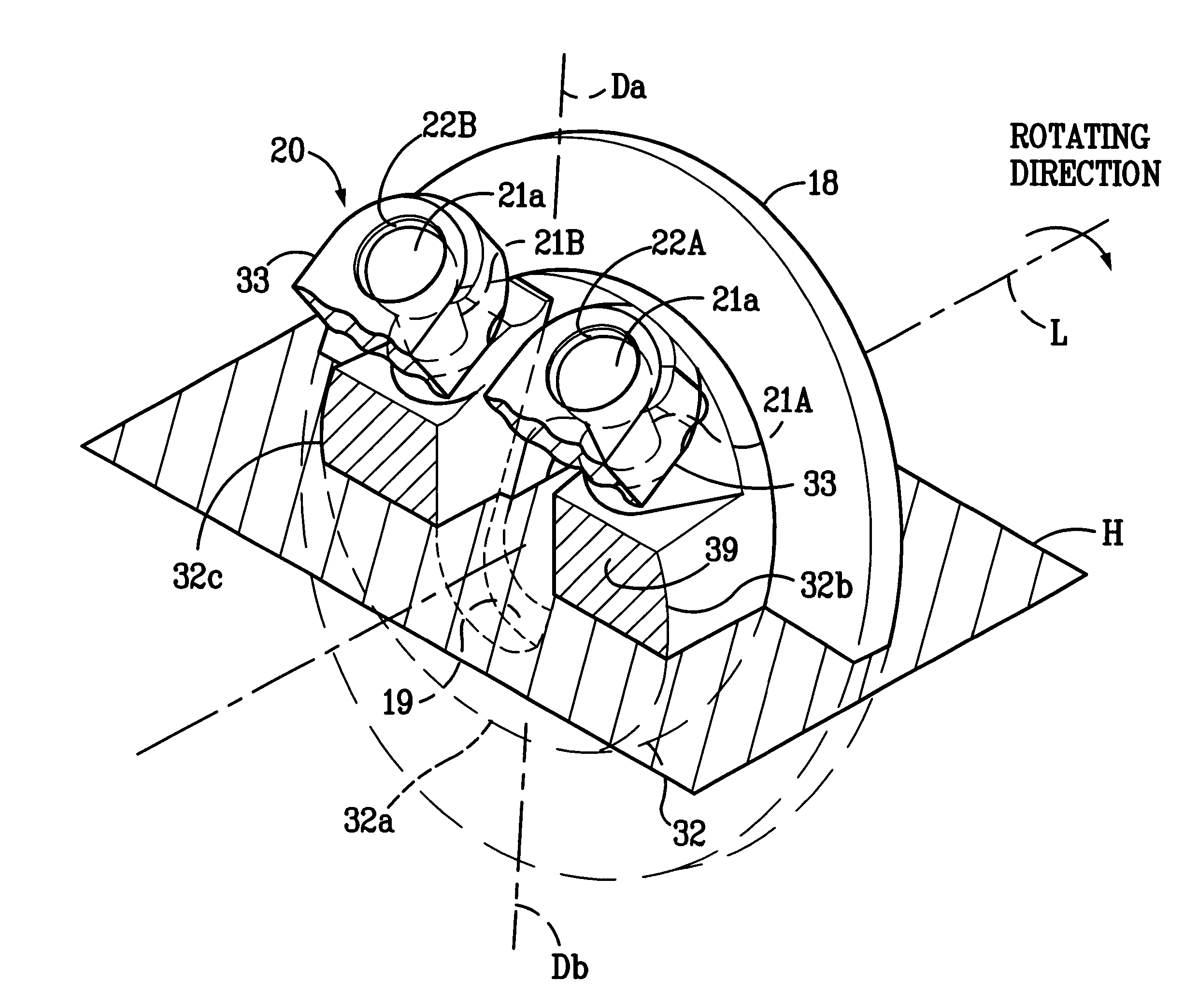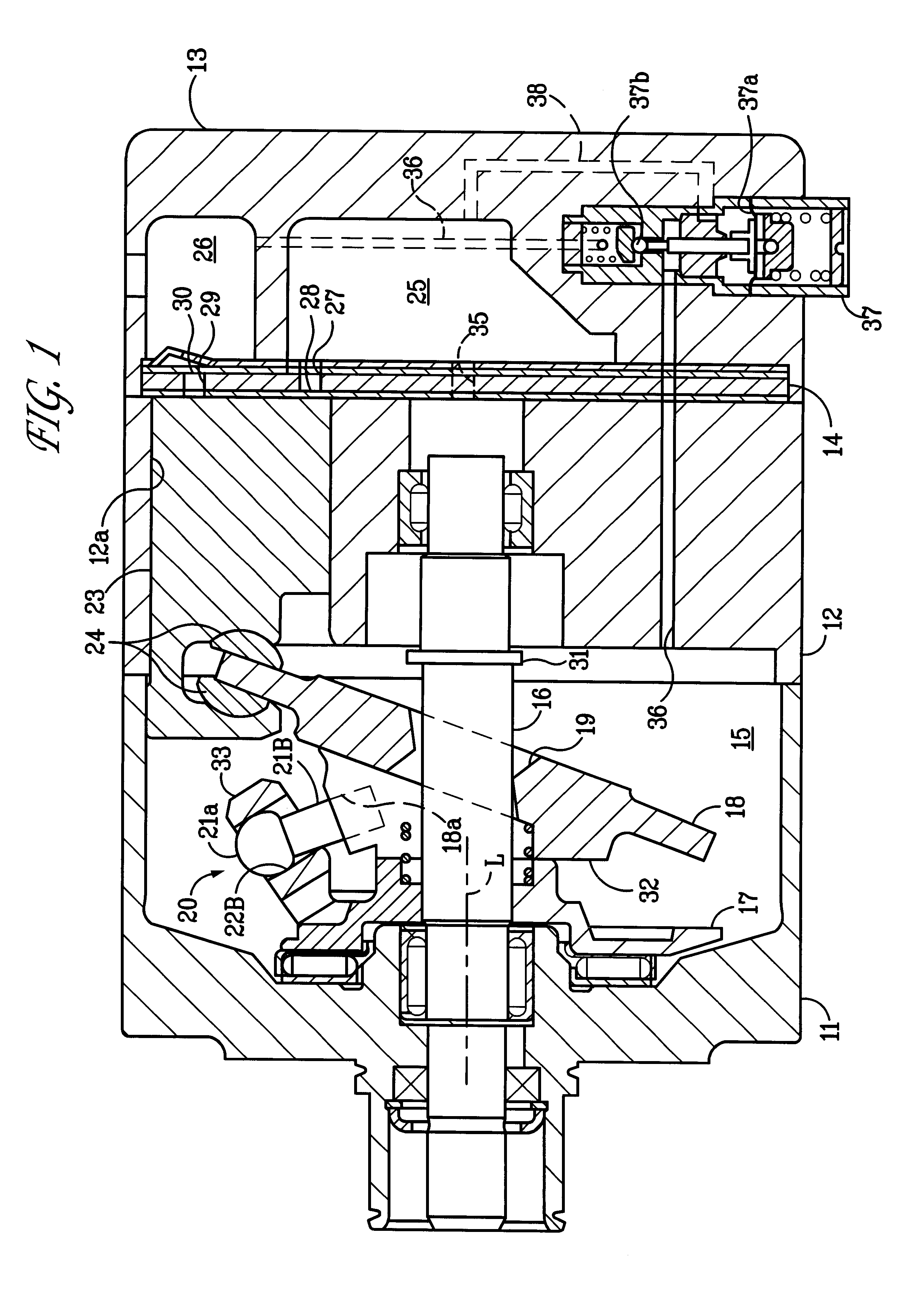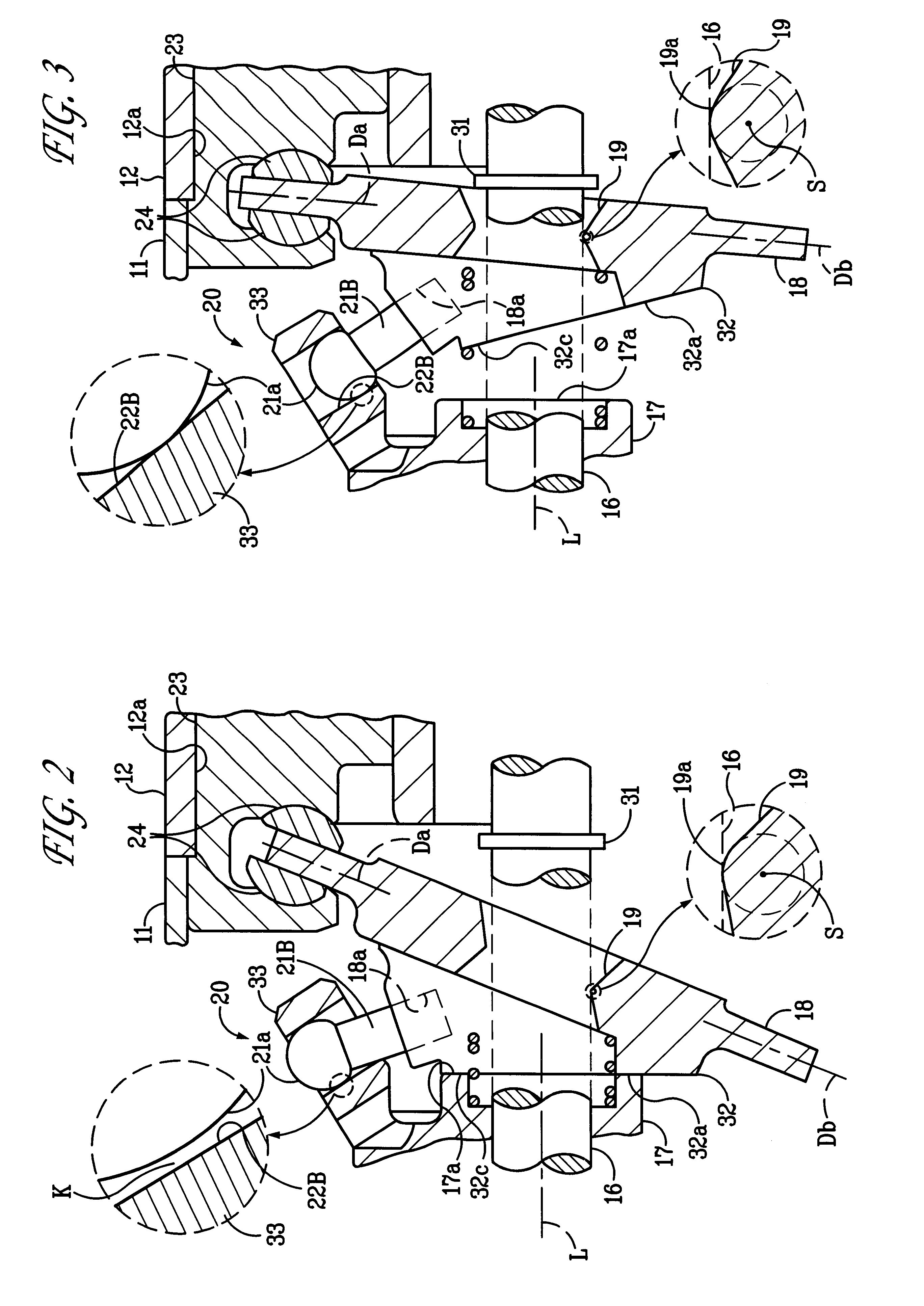Variable capacity refrigerant compressor having an inclination limiting means to interrupt compressive forces on a hinge mechanism
a variable capacity, compressor technology, applied in the direction of positive displacement liquid engine, positive displacement engine, reciprocating piston engine, etc., can solve the problems of deteriorating the controllability of the displacement capacity of the compressor, the delay in altering the angle of inclination of the cam, etc., to reduce the load proportion and reduce the weight of the cam plate
- Summary
- Abstract
- Description
- Claims
- Application Information
AI Technical Summary
Benefits of technology
Problems solved by technology
Method used
Image
Examples
first embodiment
The first embodiment described hereinbefore provides the following advantageous effects:
(1) A pair of guide pins 21A, 21B are provided on both sides of the point Da of the cam plate 18 corresponding to the top dead center. The area of contact between the bulbous part 21a of the guide pin 21A and the guide hole 22A, which are closer to the piston 23 in a compression stroke, shares a greater proportion of the compressive load than the area of contact between the bulbous part 21a of the guide pin 21B and the guide hole 22B. However, when the cam plate 18 is in its maximum angle of inclination, there is formed the clearance K between the bulbous part 21a of the guide pin 21A and the guide hole 22A so that transmission of the compressive load between the guide pin 21A and the guide hole 22A is interrupted. It is therefore possible to significantly reduce the proportion of load to be supported by the hinge mechanism 20 to the maximum compressive load applied to the cam plate 18 when the c...
second embodiment
FIGS. 6 to 8 depict a second embodiment of the invention employing a hinge mechanism 40 whose construction is somewhat different from the hinge mechanism 20 of the first embodiment. Specifically, the hinge mechanism 40 includes a swing arm 41 projecting from a cam plate 18 at its point Da corresponding to a top dead center. The swing arm 41 extends toward a rotary support 17 and a fixing hole 41 a is formed in a far end portion of the swing arm 41 at right angles to an axis L of a drive shaft 16. A guide pin 42 is securely press-fitted in the fixing hole 41a. Both terminal portions 42a, 42b of the guide pin 42 which serve as guiding projections jut out from both sides of the swing arm 41 along the rotating direction of the drive shaft 16.
There are provided a pair of supporting arms 43A, 43B on the rotary support 17 projecting from an outer peripheral part of its rear surface on both sides of the point Da of the cam plate 18 corresponding to the top dead center, one ahead of and the ...
PUM
 Login to View More
Login to View More Abstract
Description
Claims
Application Information
 Login to View More
Login to View More - R&D
- Intellectual Property
- Life Sciences
- Materials
- Tech Scout
- Unparalleled Data Quality
- Higher Quality Content
- 60% Fewer Hallucinations
Browse by: Latest US Patents, China's latest patents, Technical Efficacy Thesaurus, Application Domain, Technology Topic, Popular Technical Reports.
© 2025 PatSnap. All rights reserved.Legal|Privacy policy|Modern Slavery Act Transparency Statement|Sitemap|About US| Contact US: help@patsnap.com



